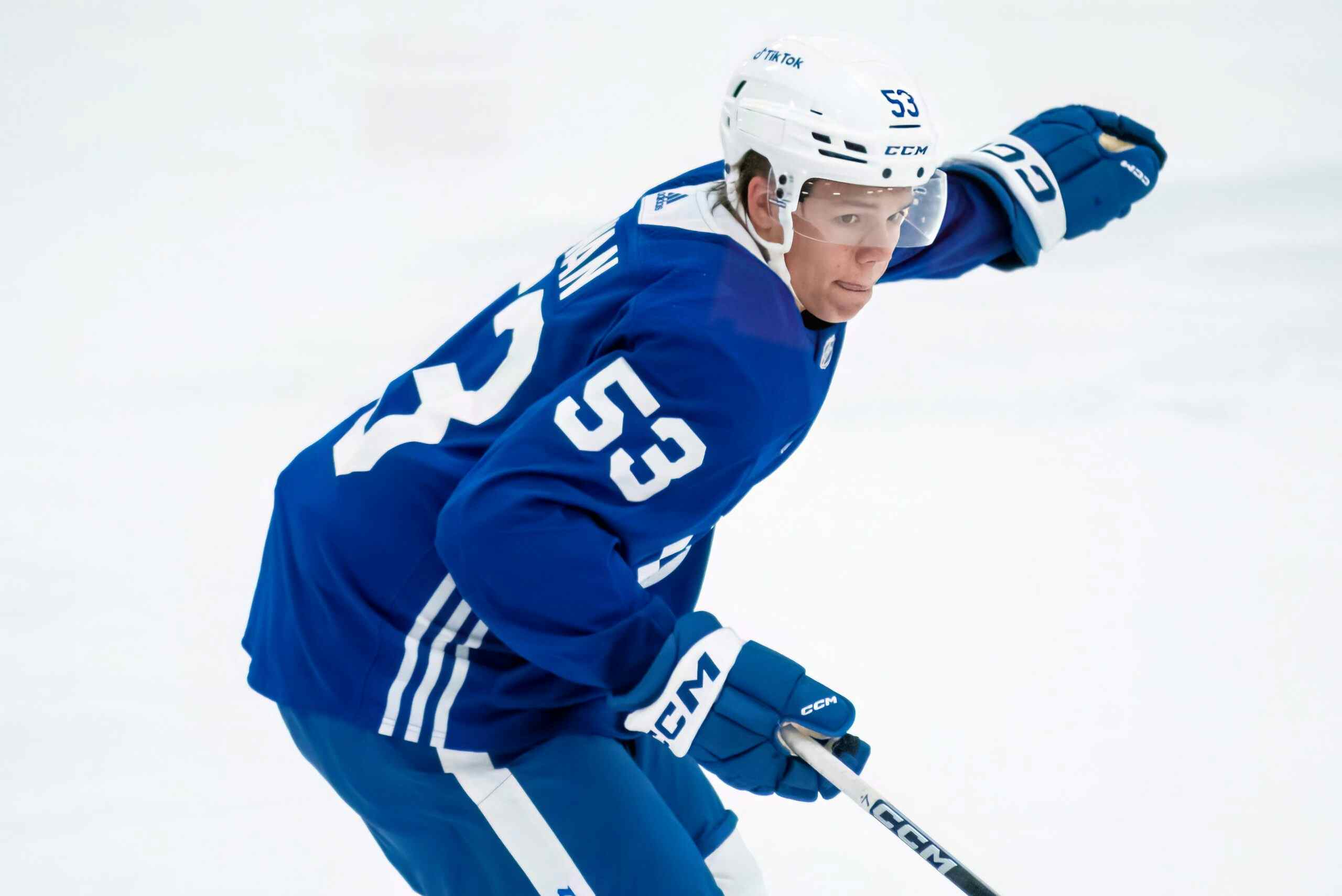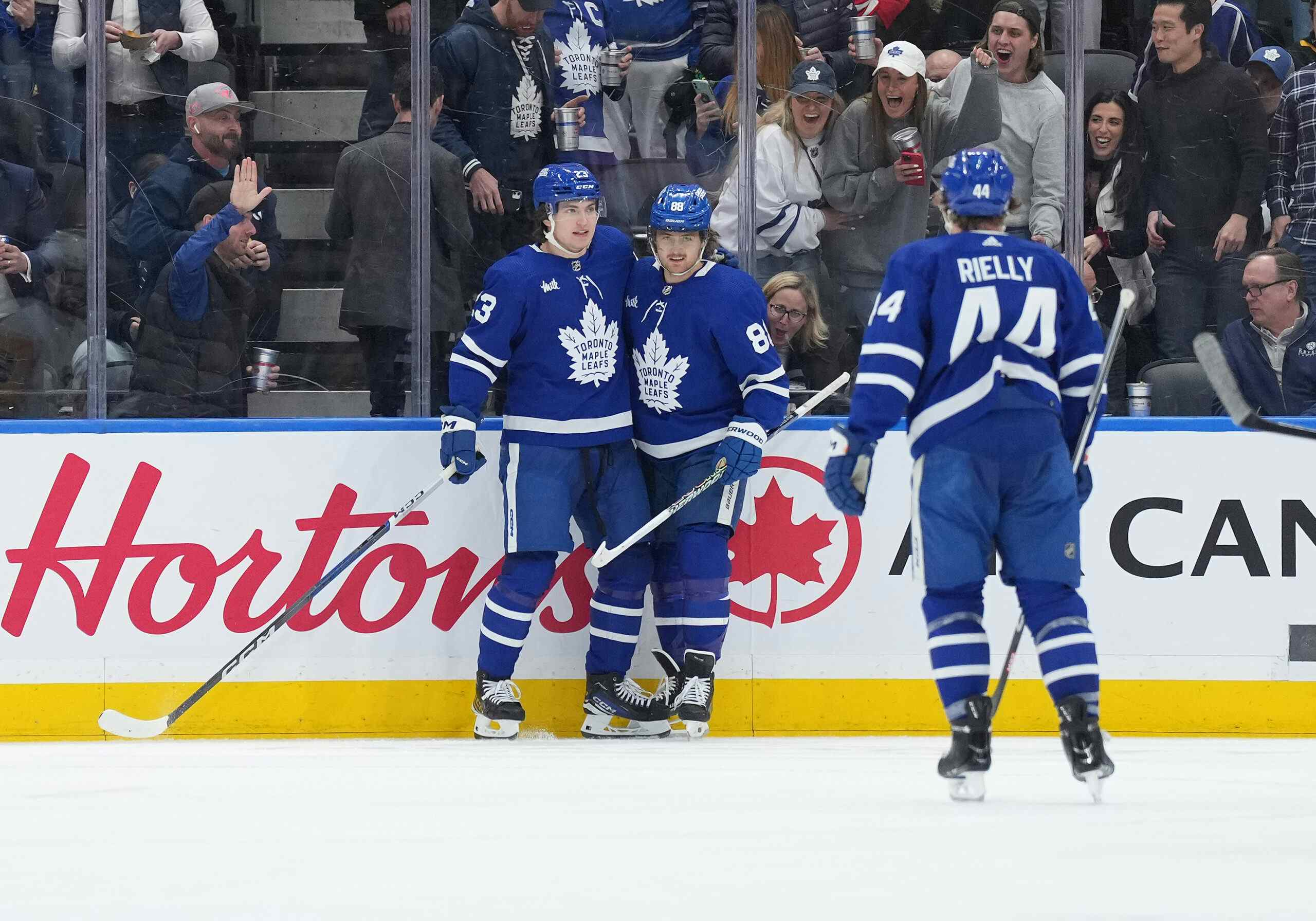When Small Moves Add Up to Big Costs
By Blake Murphy
10 years ago
On the Internet, it is really easy to overact to something small and make it into a much bigger deal than it needs to be. This is kind of what Twitter was invented for.
It’s unfortunate, but the opposite can also be true sometimes – it’s really easy to ignore small things or claim “it’s insignificant” in defense of something (or to keep the angry trolls at bay).
Such has been the debate format over several of the Leafs’ moves this offseason, minor moves that have created rage and then been dismissed. To refresh your memory, I made a flow chart of these events.

None of the moves the Leafs have made, even dating back to the Darcy Tucker and Colby Armstrong buyouts, are egregious on their own. But moves that are insignificant at the margin have a way of piling up if you consider them all as such, which is why the Leafs have a hair over $19M in cap space but not really a lot of flexibility.
To wit, their current roster is as follows:

Those RFA players, though, come at a cost. Some people may look at $19M in cap space and have their eyes light up, but even in the event that each of those RFAs signed for their previous cap hit (a poor assumption), the Leafs would be left with $10.9M to fill the remaining couple of holes. That’s not bad, but some of these players, namely Nazem Kadri, Cody Franson and Jonathan Bernier, are going to cost more.
There isn’t really a good way to estimate what an RFA will eventually sign for. Regardless, the Leafs have $19M to spend on seven RFAs and then, at the least, three more players to fill out the depth chart. It’s possible a non-roster player or two makes the squad, too, and those players would come in at a pretty low cap hit. There’s also the possibility the Leafs want to sign more players, allowing a Fraser or Holzer or McLaren to be sent to the AHL if it improves the team.
So the fact remains that the Leafs essentially threw away $3.5M in cap room this offseason via a handful of smaller, individually less significant moves.
- *The 2008 buyout of Darcy Tucker remains on the cap for this year, the sixth and final year of the buyout at a $1M hit. Without a buyout, the Leafs would have paid Tucker $3M in 2008-09, 2009-10 and 2010-11.
- *The 2012 buyout of Colby Armstrong remains on the cap for this year, the second and final year of the buyout at a $1M hit. Without a buyout, the Leafs would have paid Armstrong $3M in 2012-13 (they finished well below the cap).
- *The Leafs sign Colton Orr to a 2-year, $1.85M contract. There’s no reason he should be paid more than the league minimum and there was no rush to make this move until the rest of the roster was filled out. Cam did a good job explaining this at the time.
- *The Leafs agree to retain $500k in salary ($437k for Frattin, $63k for Scrivens) as part of the Jonathan Bernier acquisition. The Kings may not make the deal without this concession, since they’re facing a cap crunch of their own.
Add it up and the Leafs have wasted just shy of $3.5M in cap space with these small moves. Individually, they don’t hurt much, but collectively they’re hindering the team’s ability to improve this summer. You can’t blame Dave Nonis for the Armstrong or Tucker buyouts, but knowing that $2M was already tied up for those makes the Orr signing and salary retention even more questionable. But Nonis is only on the hook for the $1.43M.
If the RFA totals come in where James Mirtle estimates, the Leafs will be left with $6.73M in cap space to sign (or promote) four players to the roster (his work assumes no Holzer on the main roster). That’s about $1.68M per spot. Without said $1.43M on the cap, that figure would improve to $8.16M to sign five players, or $1.63M per spot. The average price decreased here, but the assumption is that the money would be used on a player better than Colton Orr, or on an enforcer at a lesser cost.
John-Michael Liles may have a market for his services, so it’s possible the Leafs could expand their cap space that way or acquire a player in return to fill one of the gaps on the wing. There’s a chance the team uses a compliance buyout on Liles, as well, but apparently want to save the flexibility of a buyout for next year.
Luckily, Colton Orr’s contract is below the “burying” threshold and as such can be sent to the AHL without a resultant cap hit. That’s a move the Leafs might very well have to look at given how close they are to the salary cap once RFAs are figured in.
If you refer back to the flowchart at the start of the article, you’ll be reminded that each move on its own is generally met with both an overreaction and an under-reaction. No one cap hit is a death knell and no move is irredeemable (except for acquiring Andrea Bargnani). The small costs that add up here are all just for this season and total “just” $3.5M, only $1.43M of which Dave Nonis is responsible for.
You can’t get a player for $500k, a top-four defenseman for $925k or a top-six forward for $1M. But $3.5M can help you keep a Clarke MacArthur or sign a Benoit Pouliot or a Tom Gilbert. Don’t dismiss small moves at the margin, because they add up when you keep making them.
Recent articles from Blake Murphy





